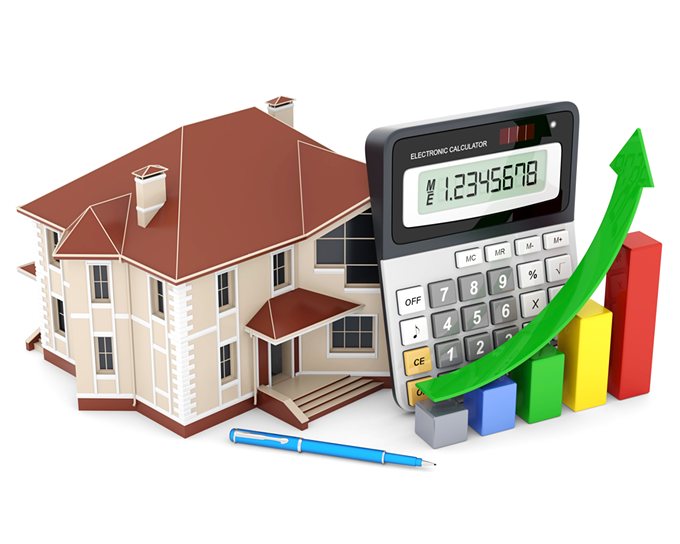Dr. Christopher Thornberg told an audience of bankers, homebuilders, real estate and other business professionals that there is no recession.
He spoke during the Nov. 9 Tucson Economic Forum, presented by Alliance Bank of Arizona.
“We’re here to talk about Arizona, we’re here to talk about Tucson, we’re here to talk about the economy,” said Thornberg, founder of Beacon Economics. “We’re here to talk about what the hell is going on out there.”
Thornberg, a nationally recognized economist, pointed to media headlines on a big screen.
“It’s pretty dismal,” he said. “If you look at the headlines, Wall Street Journal, their next recession survey (shows) 60% chance of recession in the next year, that’s moderate; this other company, (says) 98% (chance) of global recession.”
He said Mark Zandi, chief economist with Moody’s Analytics, “just called a full-blown housing market correction.”
Housing is a big concern in Tucson and Phoenix due to the increase of rents and median home prices seen in both cities.
“The housing market has been another strength of Arizona’s economy over the last two years. However, rising interest rates and stretched prices have led to a notable slowdown in 2022,” according to Alliance Bank of Arizona.
“Within this context, home prices in Arizona continue to increase rapidly. From July 2021 to July 2022, the median home price rose 21.2% in Phoenix, reaching $480,567. In Tucson, median home prices rose to $347,157 in July 2022, a 17.6% increase from a year earlier.” For Tucson and Phoenix, home prices “grew at a faster pace than the United States, where median prices rose by 13% over the same period.”
Also, as seen in this chart, the demand for apartments in both Tucson and Phoenix has surged.
In Phoenix, the apartment vacancy rate fell to 4.2%, a 1.0 percentage point decline from last year. Vacancy rates for apartments in Tucson saw a decline at 3.7%, rates are down 0.2 percentage points from a year earlier.
“In addition, the average asking rent grew by 21% in Phoenix and by 26.2% in Tucson,” Alliance Bank noted. The pace of growth puts Phoenix and Tucson metropolitan areas ahead of the 16.7% growth seen across the United States.
However, despite significant price appreciation over the last year, average asking rents in Tucson is $1,152 and rent cost on average is $1,494 in Phoenix. However, Tucson and Phoenix rents are still lower compared to the U.S. average of $1,724.
“Construction permit activity has also slightly increased over the last year in Arizona. During the first eight months of 2022, residential permitting activity in Arizona is up 0.7% over the same period in 2021.” It is noted, the “growth is being fueled by a 28.6% increase in multi-family permitting and slightly offset by a 9.1% decrease in single-family permitting.
“Some of this I can kind of get. It’s been an odd year so far,” Thornberg said. “First half of the year the economy contracted, consumer confidence is going down pretty dramatically.”
Thornberg said immediately after the first half of the year, newspaper reporters were saying, two quarters of negative growth, is a recession.
“Now, that’s a newspaper’s definition of recession,” he said. “Basically, what happens with newspapers is they simplify everything to the point of stupidity. … Two quarters of negative growth, no credible economist has ever used that definition to define recession, for a couple reasons.”
Thornburg explained, “First of all, if that’s your definition of a recession, it turns out the pandemic was not a recession, because that was about four weeks of negative growth. Mind you, that was a lot of negative, but after that it started growing.”
He said a better definition of a recession is an economy that is not living up to its potential.
“That is to say, it can produce more in goods and services, but because of some sort of market failure in the economy, it is not able to live up to that potential output.”
The best way to see a recession is to look for slack resources, he explained.
“For example, when people want to find jobs but can’t get them, that’s a hike in the unemployment rate,” Thornberg said. “Or if factories want to sell products but can’t find buyers, that’s reduced capacity of utilization.”
The October unemployment rate in the United States is 3.7%. However, over the last 50 years, “the unemployment rate has been below 4%, about four years out of it,” Thornberg explained. “That’s a pretty tight labor market.”
As for how industrial production goes, capacity of utilization is back up to 80%, he said.
“And industrial production is currently at an all-time high,” Thornberg said. “If this is a recession, long live the recession. But, of course, it’s not a recession; what’s going on in our economy is not that.”
Thornberg said even with the negative headlines, he pointed to earlier, one has to be a little cautious about them.
“But the same folks that told us those negative headlines about where our economy is right now, were the same ones who two years ago in the beginning of the pandemic, told us the pandemic is going to cause a depression,” he said.
“Remember those scary headlines? Thirty percent of Americans are going to stop paying their home loans, 30 to 40 million people are going to be evicted, home prices are going to fall any second now.”
He said when you start to see this pattern, where every “headline is just telling us how horrible and awful everything is, you have to start realizing there’s something amiss, not so much with the economy but with the headlines.”
Thornberg referred to a book, “Narrative Economics” by Robert Shiller, in which the author points a finger at the economics community, saying economics is missing the boat. Shiller writes in the book economists are too obsessed with models, data and the assumption of rational behavior.
“In the world of modern mathematical economics, we believe that people internalize the information they can and make the best decisions appropriately,” Thornberg said. “But it’s hard to think that, when really over the last decade, what I’ve noted over and over again, is no matter how good the data is, the headlines get worse and worse.
“When you think about where our economy is today, it’s not because there’s anything fundamentally wrong with our economy. Rather, it’s our policymakers who don’t seem to understand what’s happening inside our economy.”
To clarify, Thornberg said to look at our economy in 2019. Even with all its negative headlines, horror stories and tales of woe and decline, the reality was the economy was about as good as it has ever been.
“But don’t let reality intrude on a good narrative,” he said. “When the pandemic hit, these ridiculous calls of depression came up. It caused the federal government, our policymakers to vastly overrespond. The amount of stimulus they threw at this economy in response to the pandemic was insane.
“So, what happens when you throw too much money at the economy? You overheat the economy. When you overheat the economy, what happens? Inflation. There is no mystery here — except for the mystery as to why suddenly the federal reserve is not recognizing inflation as a consequence of their own actions.”
Thornberg again told the audience that there is no recession.
“We’re not in a recession. We really aren’t. There’s no way this is going to turn into a recession,” Thornberg said. “Yes, I know interest rates are up. Yes, I know real estate markets on the asset side are really starting to flinch. But, the dominant source of growth in the U.S. economy is the U.S. consumer, and the consumer is alive and well.”
Thornberg, founding partner of Beacon Economics, is one of the nation’s leading economists. He is the director of the Center for Economic Forecasting and Development at the University of California Riverside and an adjunct professor at the school. He also serves on the advisory boards of Paulson & Co. Inc., a Wall Street hedge fund, and the Los Angeles Area Chamber of Commerce.












